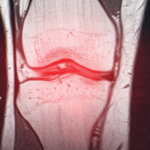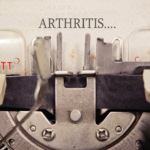Effective for dates of service on or after April 1, the Healthcare Common Procedure Coding System (HCPCS) code J0491 is valid for billing 1 mg anifrolumab-fnia.


Effective for dates of service on or after April 1, the Healthcare Common Procedure Coding System (HCPCS) code J0491 is valid for billing 1 mg anifrolumab-fnia.

In response to ACR and provider concerns about administrative burden, CVS Caremark has issued a streamlined version of its prior authorization forms for many biologic drugs.

A recent editorial provides new insights by reexamining the definitions of remission for rheumatoid arthritis and outlining concerns with the use of specific metrics for remission in clinical trials.

Katie Robinson |
Findings support the continued use of TNF inhibitor monotherapy in individuals with immune-mediated inflammatory diseases. In the study, these patients had a lower risk of hospitalization or death caused by COVID-19 than patients on other commonly prescribed treatment regimens

ACR CONVERGENCE 2021—Using pooled data from the TULIP-1 and TULIP-2 clinical trials, researchers set out to identify whether more patients with systemic lupus erythematosus (SLE) being treated with anifrolumab achieved a low disease activity state than patients with SLE who received placebo.1-3 An analysis of the data was presented at ACR Convergence 2021 by Eric…

Maria de la Luz Garcia-Hernandez, PhD, & Christopher Ritchlin, MD, MPH |
The etiology of psoriatic arthritis (PsA) is poorly understood but current evidence supports an interaction between genetic and environmental factors that coalesce to promote local tissue inflammation.1-3 The pivotal cytokines that underlie the local inflammatory response in a wide range of tissues are interleukin (IL) 23, IL-17 and tumor necrosis factor (TNF).4 The central contribution…

Rebecca H. Haberman, MD, & Jose U. Scher, MD |
As the cloud moved away from the tent, Miriam’s skin suddenly became diseased, as white as snow. When Aaron turned toward her, he saw that she was diseased. —Numbers 12:10 For 29 years he [Fray Pedro de Urraca] was afflicted by … pain, suffering it at once in all the joints of his body, with…
Background & objectives: Patients with rheumatic and musculoskeletal diseases (RMDs) may be at an increased risk of SARS-CO-V2 infection as a result of underlying disease, associated comorbidities and use of potentially immunosuppressive treatments. Further, concern exists regarding whether individuals with rheumatic diseases potentially experience more severe COVID-19 and poorer outcomes. This study was undertaken to…

A study found DNA methylation profiling may predict if a patient will progress from a diagnosis of undifferentiated arthritis to that of rheumatoid arthritis (RA). The findings also suggest a pre-established epigenetic signature exists in patients diagnosed with undifferentiated arthritis that evolves into RA.
The meetings will focus on legislation affecting rheumatology, including bills on graduate medical education and use of copay assistance funds.